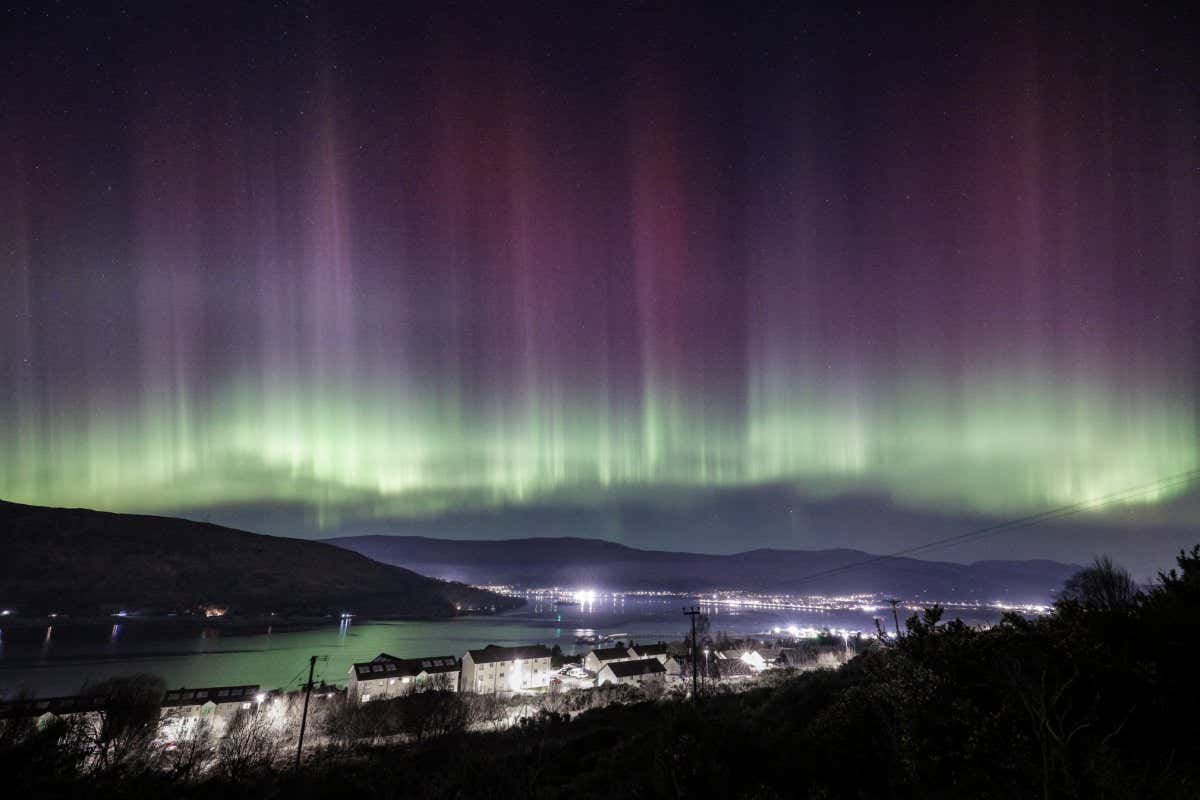Stunning Northern Lights: UK Aurora Images Capture Breathtaking Celestial Display
The UK experienced a truly spectacular celestial event recently, as the Northern Lights, or Aurora Borealis, put on a dazzling display visible across much of the country. Social media was ablaze with stunning images, capturing the vibrant greens, purples, and reds dancing across the night sky. This rare occurrence, usually confined to higher latitudes, left many awestruck and scrambling for their cameras.
A Rare Sight in the UK:
While the Northern Lights are a common sight in countries like Norway, Iceland, and Canada, sightings in the UK are far less frequent. This is due to the UK's relatively low latitude. However, strong solar storms can occasionally push the aurora further south, making it visible in parts of the UK, and this recent event was one such occasion.
The Science Behind the Show:
The Aurora Borealis is caused by charged particles from the sun colliding with atoms and molecules in Earth's atmosphere. These collisions excite the atmospheric particles, causing them to emit light. The colour of the aurora depends on the type of particle and altitude of the collision. The vibrant greens are common, while reds and purples indicate higher altitude interactions. The intensity and visibility of the aurora are directly related to the strength of the solar storm.
Where were the best sightings?
Reports of sightings flooded in from across the UK, but some areas offered particularly stunning views. Scotland, unsurprisingly, was a prime location, with breathtaking images emerging from the Scottish Highlands and islands. However, reports also came from northern England, Wales and even parts of southern England, demonstrating the extent of this unusual event.
Capturing the Magic: Tips for Aurora Photography
Many amateur and professional photographers captured incredible images of the aurora. If you're hoping to capture your own stunning aurora shots, here are some tips:
- Find a dark location: Light pollution significantly hinders aurora viewing. Escape city lights for the best chance of seeing the aurora.
- Use a tripod: Long exposure photography is essential for capturing the aurora's faint light. A sturdy tripod is crucial for sharp images.
- Wide-angle lens: A wide-angle lens allows you to capture the expansive nature of the aurora.
- Adjust your camera settings: Experiment with long exposure times (10-30 seconds or more), high ISO (up to 3200 or higher), and a wide aperture (f/2.8 or wider).
- Check the forecast: Websites and apps provide aurora forecasts, predicting the likelihood and intensity of aurora activity.
Looking Ahead:
While this recent display was a truly exceptional event, it highlights the unpredictable nature of the aurora. Keep an eye on space weather forecasts and you might just be lucky enough to witness this breathtaking phenomenon yourself.
Social Media Highlights:
[Insert a curated selection of high-quality images from reputable sources. Credit the photographers appropriately.]
Call to Action:
Have you seen the Northern Lights? Share your experiences and photos with us in the comments below! And don't forget to follow us for more updates on astronomical events.
Keywords: Northern Lights, Aurora Borealis, UK Aurora, Aurora UK, Aurora sightings, Northern Lights UK, Aurora photography, Space weather, Solar storm, Celestial event, UK night sky, Stunning aurora images, Aurora forecast.

